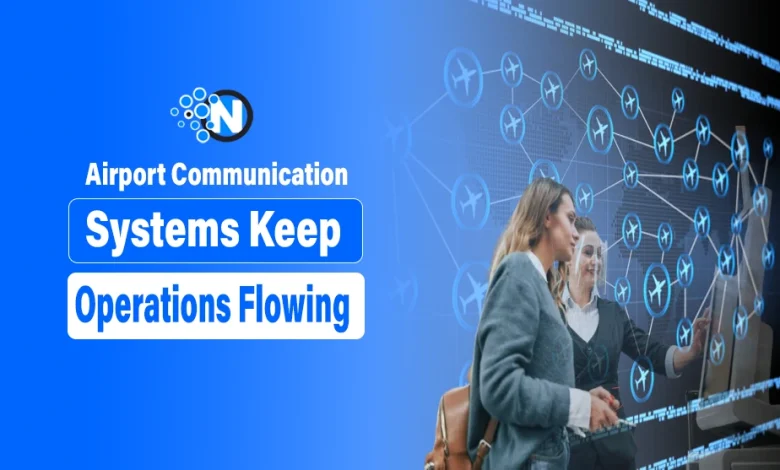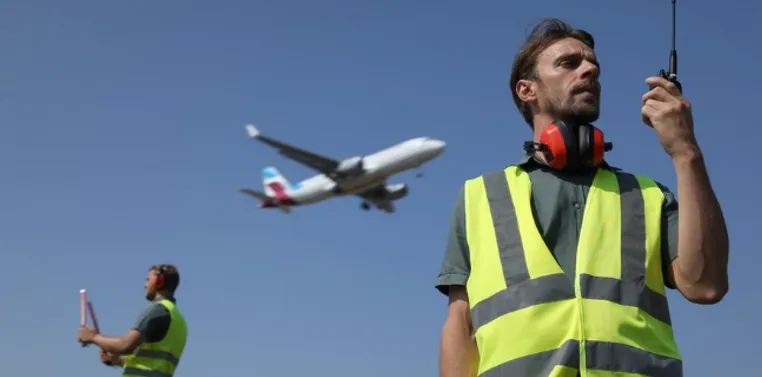How Airport Communication Systems Keep Operations Flowing and Passengers Informed

Airports are one of the most complex environments that require the highest level of operational skills to function seamlessly. In addition to that, there is a need for smooth coordination between human beings, infrastructure, and technology.
Imagine the wide variety of information and data that is involved in the thousands of flights that take off and land daily, and the millions of passengers, not forgetting the logistics involved. All these require effective communication, as even the tiniest bit of miscommunication can cause significant chaos.
At the centre of this complexity lies a very important element, and that is airport communication systems. These systems are the unseen forces that keep airports functioning efficiently. From handling baggage to runway operations and boarding gates information, all require effective communication to run smoothly. These systems ensure that service providers, airlines, staff, and passengers are all on the same page at all times.
In this article, I will discuss the various types of systems used in the airport for communication to keep operations flowing and passengers informed.
The Complexity of Airport Operations
Airports are dynamic ecosystems that need an almost minute-by-minute information exchange across
various stakeholders and departments. They include the following:
- Air Traffic Control (ATC)
- Ground Operations (includes catering, fuelling and baggage)
- Security Teams
- Airline Personnel
- Maintenance Crews
- Customs and Immigration
- Passengers
The stakes for all involved are quite high, which is why there cannot be even a hint of miscommunication. A breach of communication can cause security issues, lost luggage, and flight.
Types of Airport Communication Systems
Different types of specialized communication systems are used in airports and they all
serve unique purposes. However, they all work in unison to aid both information for internal operations
and the public.

Below are the different airport communication systems that work together:
Air Traffic Control (ATC) Communication
ATC is the most important information exchange network. This entails the use of VHF/UHF radios and radar for communication between air traffic controllers and pilots to coordinate take-offs, landings and routing in-flight.
1. Tower Control – Guide aircraft on taxiways and runways.
2. Approach/Departure Control- Direct aircraft in and out of the airspace.
3. En-route Centers- Keep a keen eye on aircraft between airports.
From the above, we can see that this system is very critical for the orderly and safe movement of aircraft.
Airport Operations Communication (AOC)
The AOC is the command hub of every airport. It is one of the airport communication systems that ensures aircraft turnaround is timely and that ground staff are coordinated efficiently. They achieve this by managing and coordinating daily operations such as parking of aircraft, flight schedules, ramp control and emergency responses.
These centres use the following:
1. Two-way Radios
2. Dispatch Software
3. Automated Alerts and Messaging Systems
Public Address (PA) and Digital Signage Systems
Passengers have come to depend on the information they get each time to navigate airports. That is why public address systems, digital signage, and screens are very important components of the information exchange network in that space. These devices and technologies help to relay information about the following:
1. Arrivals and departures of flights
2. Boarding calls
3. Gate Changes
4. Locations for baggage claims
5. Security alerts and instructions during an emergency
These apparatuses are controlled from a central place and typically integrated with the information database of the airport to ensure accuracy and consistency.
Passenger Information Display Systems (PIDS)
These are digital apparatuses that display flight data, directions to different spots/locations and emergency alerts. They are usually connected to the operational database of the airport and update in real time to keep everyone informed.
PIDS are usually located in the following areas:
1. Check-in Areas
2. Departure Halls
3. Boarding Gates
4. Baggage Claim Zones
PIDS that are combined with audio announcements help to reduce confusion and enhance the flow of
passengers through the terminal.
Ground Handling and Baggage Communication Systems
The various ground crews found in the airport use wireless communication gadgets to coordinate the cleaning of the different aircraft, fueling, catering, and loading. Baggage networks are connected with scanning and tracking devices that ensure that every luggage goes to the right place.
The key features include:
1. RFID Tracking
2. Barcode Scanning
3. Baggage Reconciliation Systems (BRS)
Security and Emergency Communication
Security officers use CCTV cameras and encrypted radios to monitor sensitive zones and respond promptly to incidents. Every airport is also furnished with Mass Notification Systems (MNS) that broadcast emergency information promptly across outdoor areas and terminals.
Some of the components of emergency communication are:
1. Fire Alarm and Suppression Systems
2. Evacuation Notifications
3. Coordination with law enforcement and emergency medical services (EMS)
Collaborative Decision-Making (CDM) Systems
Airport Collaborative Decision Making (A-CDM) improves the sharing of information between airport operators, airlines, and air traffic control. They help with the following:
1. Prediction of departures and ETAs (Estimated Time of Arrival)
2. Reducing conflict at boarding gates
3. Coordination of refuelling, de-icing, and boarding
With proper data sharing, efficiency is enhanced, delays are reduced, and less impact on the environment from idling and taxiing.
Enhancing the Passenger Experience
Apart from the operational benefits to be derived from these operational networks, they also contribute
immensely to the overall passenger experience with:
1. Real-Time Flight Updates
2. Multilingual Announcements
3. Mobile Alerts and Self-Service Options
Conclusion
Airport communication systems are the foundation on which operational processes rest. They consistently and unobtrusively ensure that a myriad of processes occur seamlessly daily. With each passing day, technology evolves and provides intelligent communication platforms that can be integrated with existing ones to improve efficiency, safety, and passenger experience.
Without these apparatuses and technologies, there is sure to be chaos and confusion in the aviation space. That is why investment in these network apparatuses is often considered money well spent.




